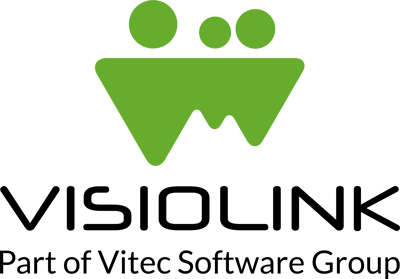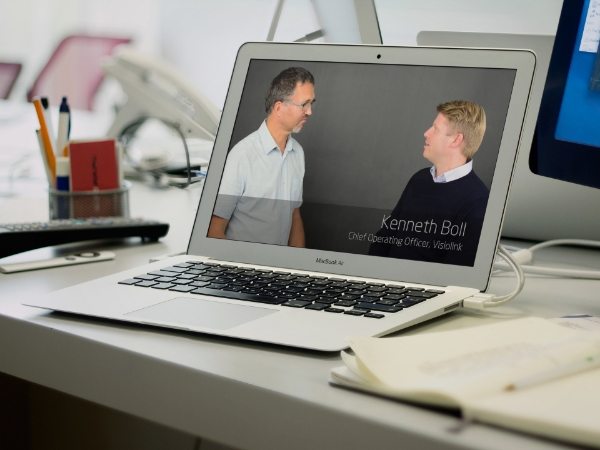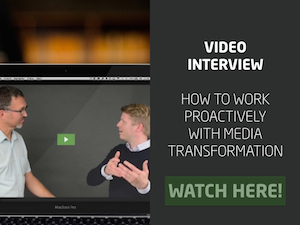This blog post is a full transcript of the “How to proactively work with media transformation” video on the Nordic Media Programme 2014 with Kenneth Boll. In this interview we discussed the programme he is participating in this year.
- Start of transcript -
Traditional media is challenged in many ways in these years. We see declining circulation numbers for the printed newspapers. And we very much see the same thing regarding a decline in ad revenue from the same source.
Today, I have invited Kenneth Boll here from Visiolink in our studio here to discuss a Programme Kenneth is participating in this year, a Programme called the Nordic Media Programme. And it’s a Programme that tries to take action to these findings and things that are happening in the industry at the moment. So I’m going to ask Kenneth a few questions on this Programme. What is the reasoning behind the Programme and how they are trying to work on these subjects in a proactive way? So welcome, Kenneth.
Thank you.
I guess the first thing I should ask you, what is the Nordic Media Programme?
It’s a Programme that is taking place every second year. This year it’s the 21st in a row. And so it’s been going on for at least four decades. It’s arranged by the four Nordic print organizations, and the participants are mainly newspapers and magazines. And we are in a whole year set up to meet four times at four different destinations - in Copenhagen, Oslo, Helsinki, and Stockholm - to discuss different kinds of topics and at the end of the year to sum everything up to actually concrete action plans.
One obvious question already, this a Programme for newspapers and not for vendors working together with newspapers. So what’s the reasoning of Visiolink participating in this Programme?
It’s also a new thing. I don’t know exactly for the previous decades if vendors have participated. In recent times, it’s a new thing. We took the initiative to call the NMP to talk to them about how our perspectives were as a partner into the newspaper and magazine industry, how many synergies there are to watch their transformation in order to meet how we work with them and how we transform. And actually they asked this year at NMP, they asked the newspaper and magazines if it was OK that we joined. And I remember that the coordinator I talked to said that if only one newspaper or magazine has a veto on it, you cannot participate. So I see that it’s 100% OK. And we can make a difference together with our clients there.
That sounds great. What are the challenges you are working on during this Programme? And it’s a yearlong Programme, is that correct?
That’s correct. The challenges are mainly in a overall topic about transformation. How do we transform this huge industry that has been a very important part of society and also a very good business model for owners of newspapers and magazines? How do we transform it to the present? We started in Copenhagen with an overall topic of actually just trying to identify how do consumers see us as a newspaper and magazine? Do they know us?What do they know us about? And how do they relate to us as a product that they use on every day. And the interesting part of the seminar in Copenhagen was that we were actually out on the street talking to people. And interesting for me is that if you walk on the pedestrian street and ask people, what kind of newspaper do you read? And if you go really young on people, asking them, they’re like, newspaper, newspaper. You mean television or–
So the product itself is actually questioned today?
The product is questioned. And the positioning of the value proposition that the newspaper has, especially to the young audience, is really low. And obviously, they’re getting their news from other channels– social media, but also websites. And what they do not realize is that actually the content that they read there comes from journalistic content, meaning that a newspaper might be behind whatever they read on different kinds of channels as well.
You have a lot of discussions regarding these subjects and challenges, of course?
Yeah.
So, discussion is nice. Talking together is very nice. But how do you move from discussion to action?
In Oslo, which was in the second quarter, we talked a lot about how can we meet what the studies gave us of information in Copenhagen, how can we meet that on an organizational level? How should we organize in the company? And what if we want to change something that has been a tradition for many years? If we’re going to change that, how would that affect the way our organization is thinking? So in Oslo, we got more concrete on transforming knowledge into how should it be. After the Oslo event and up until the third quarter, where it was in Helsinki, we went back home and tried involving our organization. So that in Helsinki, we came back with adjustments to the ideas, the concrete action part, and said, we’ve tried this now in our organization. This works really well. This we need to work more on, or this we need not to focus on because it’s not relevant for us for some reason. In Helsinki, we took the management perspective. Say OK, we know what the consumer is saying. We know what kind of changes we, based on that, should do in our organization. Now we have feedback in order to go home and try it and create that new culture. So management perspective was in Helsinki in Q3 here for a couple weeks ago.
You’ve really taken it from the street up to top management?
Definitely.
This kind of demands – that’s a question – demands a very honest environment. You have to be very open of what is happening in the different media houses and what you are targeting and trying to solve at the moment.
Definitely. And obviously, when you spend that much time with people, you get some kind of at least personal relationship. And I would say that many private things are also topics when we meet. Take into consideration that we fly in on a Sunday, and we leave Thursday evening. We spend most of the hours during the day, from 7-ish in the morning till late in the night. Many of the discussions and debates continue up until 9 or 10:00 in the evening. Afterwards, we’ll go to dinner, we have a drink or two, we socialize. And during that time, you get very close. So you get a more deeper and private understanding on how does it affect when the media industry needs to cut off workers? How does it affect them when cost is such a vital thing of their every day? How do they transform that into actually performing, advancing, and moving away from how things used to be and how it should be? I’ll not go into details. It’s very private.
Of course. And that’s healthiest when you’re in an environment like that. You are nearly finished with the Programme, I guess. What is the end product here?
The end product is in Q4 in Stockholm in November, where we’re going to actually make a report. It’s going to be a conclusion of everything we did for the three previous quarters–all the researches and studies that we did, the experience that we’ve had in our organizations. We take that into one big report, which is not a fixed report to say something that we need to or should follow. It’s more like a letter of intent. You might say that this our intention to actually strive through and do these changes so that we can try as a united Nordic media group to transform and change the mindset or value proposition of our businesses in each and every country.
Sure. And I’m sure you have made a tight-knit group now. When you’re having these discussions, you are close together. So I’m sure this is something you are going to continue, also after the Programme itself has ended.
I would say that especially here in Helsinki last time, which was the third session, is where we really bonded. Everything came up to a higher level, so to say.
It makes sense.
We’ve been so close for many of the sessions that we can start to see what was the outcome of the discussions that we had. So we’ve talked, actually, all the participants to meet afterwards again. I’ll arrange to meet, in the beginning of 2015, each and every company to see it in practice and just to stay in contact and support each other in transforming into the future.
And that’s not only the newspapers. That’s for certain also the vendors supporting the newspapers.
Yes, exactly.
OK. Thank you, Kenneth.
You’re welcome.
It was great to hear about the Nordic Media Programme. And I’m sure if you have any questions to Kenneth, he’ll be ready to answer them. You can write him an email, call him. I’m sure he’ll be ready for you. So thank you for listening in here, and have a nice day.




